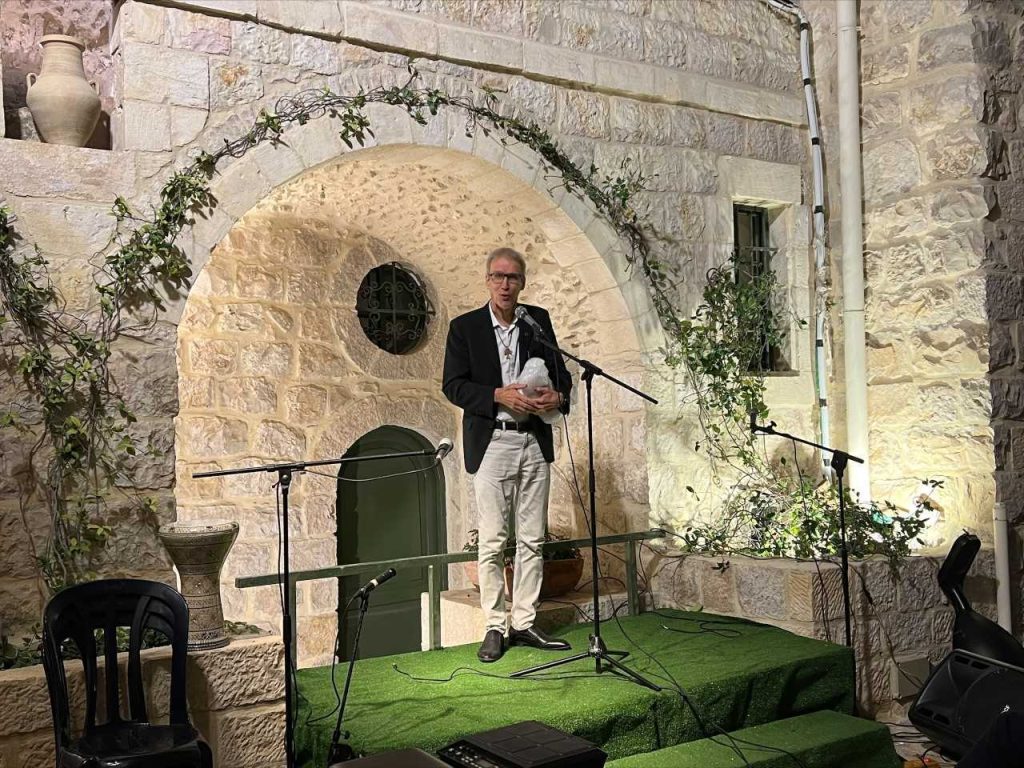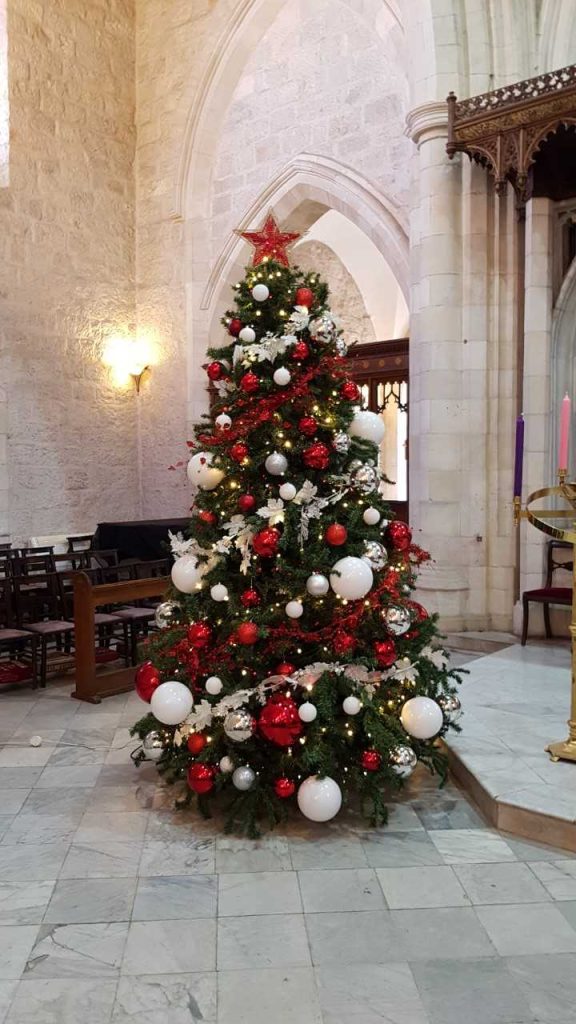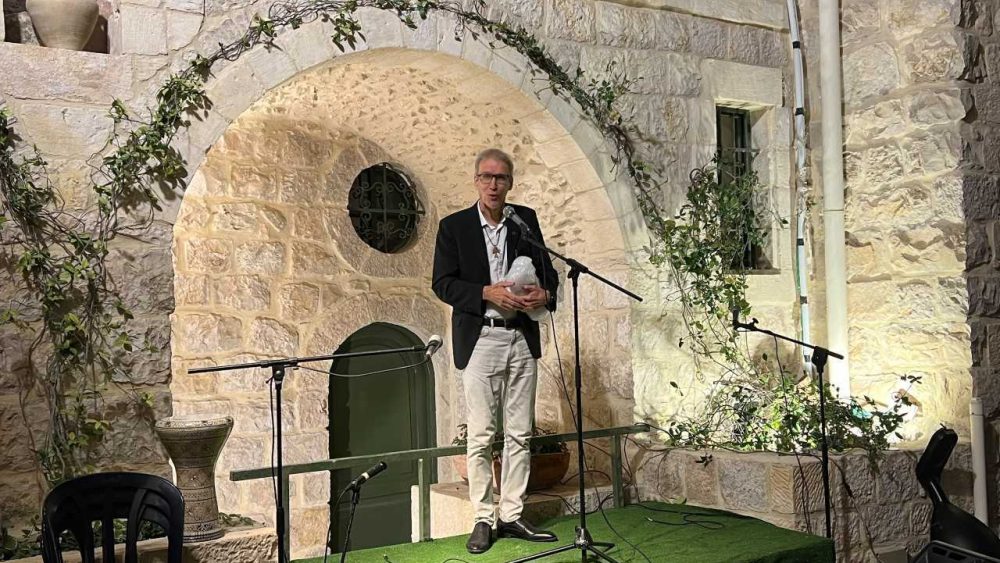Svante Lundgren, Associate Professor in Jewish Studies, writes about his research stay in Jerusalem:
Someone must be the first, and I was lucky to be the first person to enjoy a stay of about three months at the Swedish Theological Institute (STI) in Jerusalem within the so-called Mörthen program. Anna, the director of STI, called me den första mörten (the first roach). I arrived on October 2, and left on December 29. I have been in Israel/Palestine several times before, but never this long. And it was an incredible eight years since my latest visit. So, I was happy to be back.
For those who do not know, STI operates since 1951 in a wonderful building at the Street of the Prophets in Western Jerusalem. It is commonly regarded as one of the most beautiful houses in the city. It was a pleasure to sit in the garden for a fika break, looking at the beautiful 19th century house in classical Jerusalem stone, seeking shelter from the sun under the olive and fruit trees. The sun was, indeed, shining. When I arrived it was 30 degrees, and although it soon dropped to 25 it was nice and warm almost every day until mid-December.
STI has a staff consisting of three Swedes (director, manager, chaplain), a Swedish volunteer, and five locals (one Israeli and four Palestinians, of whom two are Christians and two Muslims). There was a good atmosphere between these. Later when my wife joined me in Jerusalem, she also felt very welcomed in this community at STI.

I did not live in the STI building, but in another institute, the Albright Institute of Archaeological Research. It is in the Eastern part of Jerusalem, so every day when moving between my two institutes I crossed the invisible border between Eastern (Arabic) and Western (Jewish) Jerusalem. I liked staying at Albright. I learnt to know some of the scholars there and was occasionally invited to join them in their events. For example, I took part in my first Thanksgiving celebration ever (Albright is an American institute).
On a normal day I would walk to STI – it took about 15 minutes – and then work there in the library until early (or sometimes late) afternoon. Some days I spent at one or another library at the Hebrew University on Mount Scopus. I also visited different persons whom I interviewed for my research project about identity constructions among Jews from Kurdistan. The interesting thing about these is that they – like many others – are so divided over their identity. Originally, they have been labelled “Kurdish Jews”, but this is now contested by many. Some even prefer to be seen as “Assyrian Jews”. As I have done research on both Jews and Assyrians, this was of utmost interest to me.
Being a visiting fellow at STI does not simply mean doing your own research, but also contributing to the work of the institute. I gave two lectures to visiting groups, and some short interviews to a group of secondary school students who visited Jerusalem and made short videos about different topics related to the city. I also represented STI at some events, e.g., one at the Swedish Embassy in Herzliya.
I was also able to make some contacts with the Armenian community in Jerusalem. One evening I gave a lecture at the library of the Armenian Patriarchate (it was an event co-organized by the Patriarchate and the Danish Church) and I also had the privilege to visit the Armenian school and talk to the students of the 11th and 12th grade.
Jerusalem is not far away and during my stay I met a lot of friends who visited the city. During the first weeks three colleagues from CTR (Torsten, Karin and Magnus) stayed at STI and later the director of the Centre for Advanced Middle Eastern Studies at Lund University, Karin Aggestam, dropped in at the institute for a chat. I also met two former colleagues from Åbo Akademi University who happened to be in Jerusalem (not at the same time).
STI is owned by the Church of Sweden and was during my stay visited by several representatives of the church. It has good contacts with the local churches, especially the Evangelical Lutheran Church of Jordan and the Holy Land. If you are interested in Middle Eastern Christianity – I am – and/or want to socialise with Bishops and other church leaders, this is a good place to be. Christmas Eve and Christmas day, my wife and I spent in Bethlehem. On Manger Square, I was interviewed by Maltese television and asked why I celebrated Christmas there. “Why not?”, I answered, “this is after all where it happened.”

One thing people always ask about is security. 2022 was the bloodiest year in the Israeli-Palestinian conflict for more than a decade. There was unrest and violence in some suburbs of Jerusalem, but nothing came close to me. At no time did I feel unsecure, but the political situation is indeed very difficult, more so now than for a long time.
All is not work and during my free time it was good to leave Jerusalem. I visited Bethlehem several times, and Jericho and the Dead See. Our weekend trip to the Galilee was one of the most memorable events during my stay. We visited the mainly Druze village of Peqi’in and learnt a lot about this fascinating religious minority.
In sum: it was a fruitful stay both when it comes to my research and otherwise. I hope that the cooperation between CTR and STI will continue and prosper. And for my own part – I hope to be back in Jerusalem soon.
Svante Lundgren

